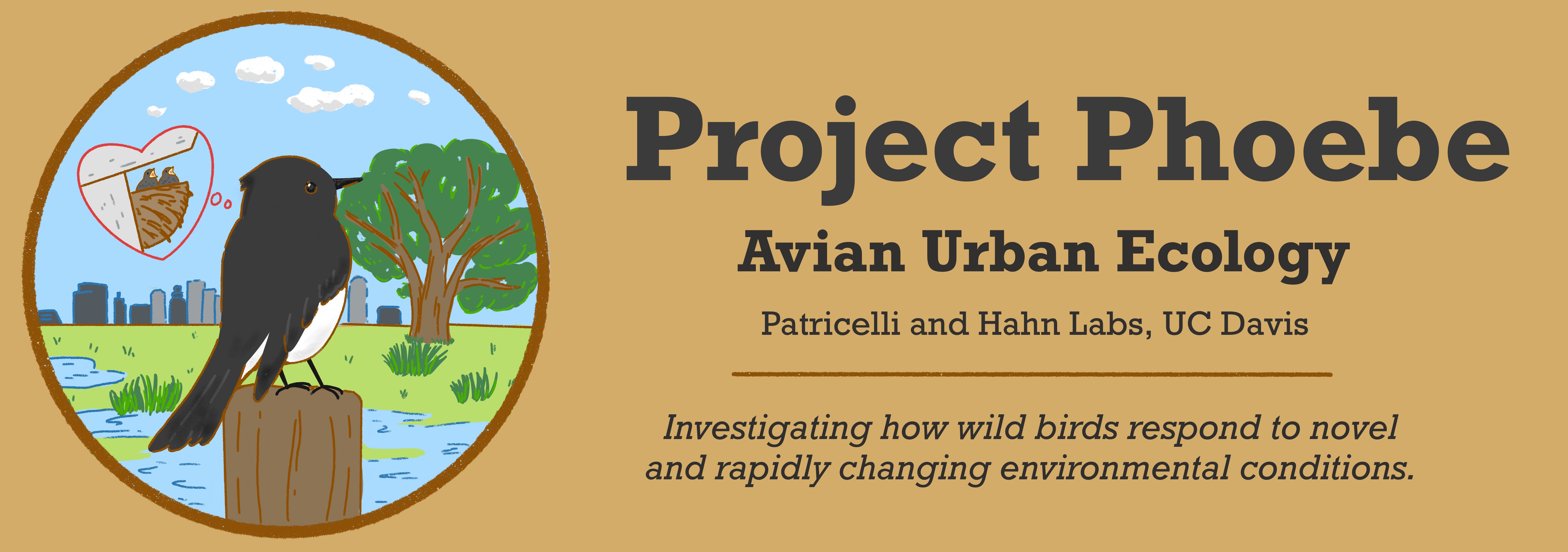Why Care about Urban Wildlife?
Being good neighbors to wildlife provides us with many benefits, and it is also becoming more and more important for biodiversity conservation.
Ecosystem Services
Just by living their lives, the wildlife we share the planet with make our lives as humans immeasurably better, and this is true even in urban settings even if we might feel far removed from wildlife and the ecosystem. On a very practical level, having robust and diverse wildlife communities nearby helps to keep us healthy, comfortable and food secure. Insectivorous birds (like the Black Phoebe!) manage pests like mosquitos, flies and gnats naturally as they forage. Urban mammalian predators likewise help to manage what would otherwise become unruly populations of small mammals. Scavenging animals clean up after deaths occur (such as with roadkill),and detritus-eating animals help to process our waste. A variety of native insects pollinate our local gardens and large-scale farms, providing us with the food we eat.
Local wildlife also provide us with psychological benefits that can’t be overlooked. Staying with the idea of pollination services, birds and insects alike are responsible for much of the floral beauty around us as they fly about our urban parks and green spaces and help plants produce new generations. Wildlife also enrich our sensory experience of life directly with their colors, sounds and spectacles. Regardless of the exact mechanism, it’s safe to say that observing and connecting with wildlife around you can foster a state of mindfulness and offer you some amount of calm and happiness!
Conservation
Taking a non-human-centric perspective, making space for a wide array of wildlife in our urban communities helps to prevent biodiversity loss in ways that we are still learning more about. At a basic level, making our cities and suburbs safe and welcoming for wildlife can help to offset habitat lost in the process of development to some extent. Many species are able to make their lives work in the urban environment or at least will attempt to, so urban areas truly can function as ecosystems in their own right and support robust populations.
Zooming out, these urban populations can in turn be directly important for the conservation of other non-urban populations. For example, urban areas are often geographically arranged such that they sit between multiple “natural” areas (think State and National Parks, nature preserves, mountain ranges, canyons, etc.). In such cases, a wildlife-conscious city might facilitate the movement of individuals from one natural area to another, while a poorly designed city might completely impede such movement. The poorly designed city would therefore cut off connectivity between previously connected natural areas, leading to a range of consequences for the populations that inhabit each.
Lastly, having wildlife in our urban environment gives us many opportunities to study how different species might respond to the kind of rapid environmental change, like climate change, that is ongoing across the globe and is predicted to intensify. Urban environments, with all their novel and exaggerated features, are a great model for rapid environmental change, and accordingly they can drive likewise rapid changes to the phenotypes and or/genotypes of the organisms that inhabit them. Putting a lens to these processes of urban phenotypic flexibility and evolution can help us learn more about how these processes work in fast timescales in general, about whether they are generally adaptive and about which species may or may not be able to utilize them to cope with rapid environmental change. For example, concerns about how various wildlife species will respond to increasing global temperatures motivates us to study heat in urban environments, which conveniently tend to be hotter than surrounding vegetated environments. This exaggeration in urban environments gives us a chance to look at how wildlife respond to and cope with the sort of high temperatures that may become the norm for the rest of the planet in a few decades, without having to wait.

